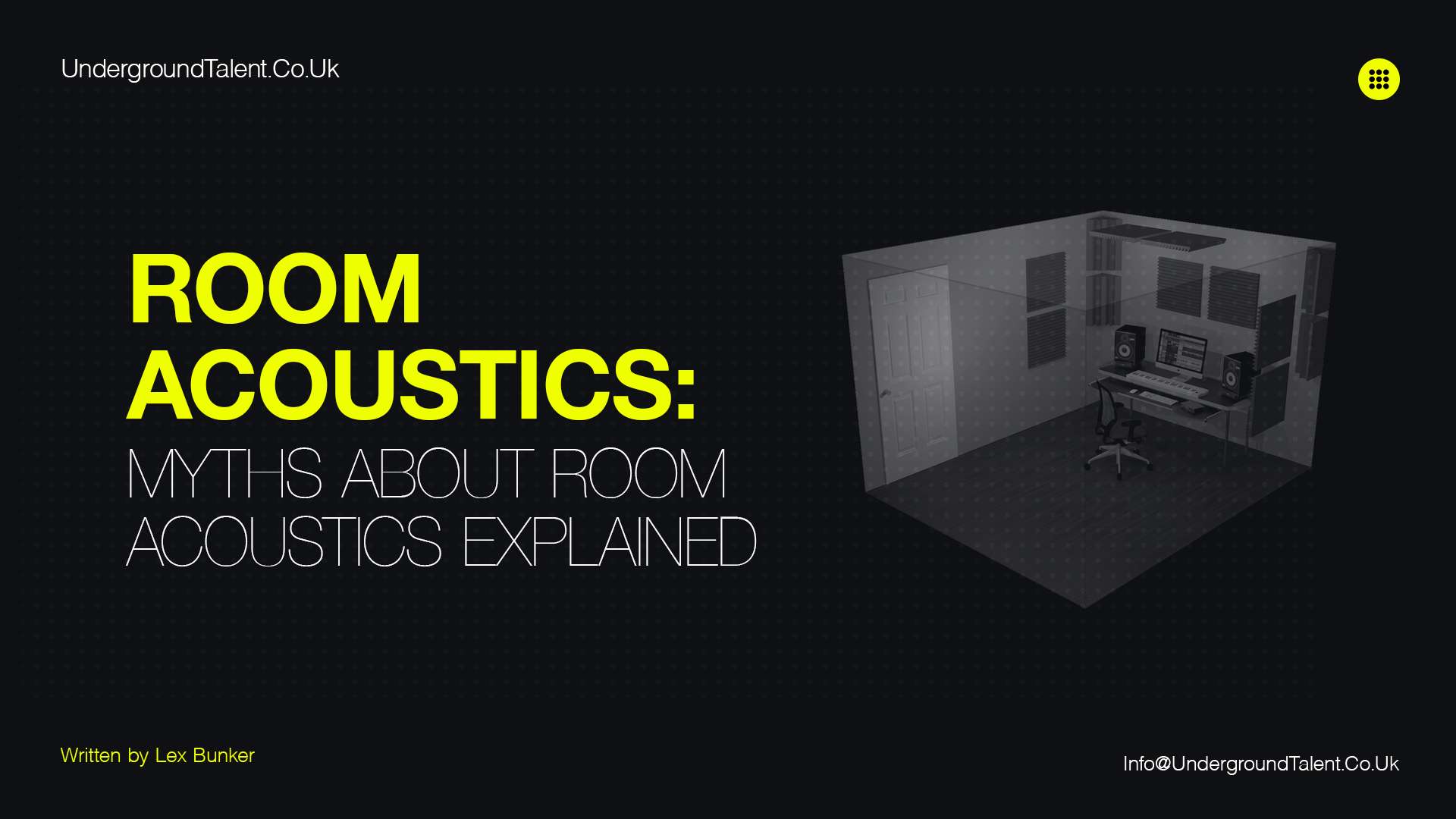10 Myths About Room Acoustics
Working on improving the sound of your room acoustics can be a challenging task, especially if you are not familiar with the common mistakes and myths about room acoustics that can affect the outcome. Many people believe that adding sound-absorbing materials is the only solution to improve room acoustics, or that expensive treatments are always necessary. However, these misconceptions can lead to ineffective or even detrimental solutions, and it’s important to gain a proper understanding of room acoustics before making any changes.
This article aims to help you navigate through the complexities of room acoustics by highlighting 10 common myths and mistakes that you should be aware of. From understanding the role of different types of sound-absorbing and sound-reflecting materials to cost-effective solutions, this article covers a wide range of topics that will help you make informed decisions when it comes to improving the sound quality in your space. Whether you are a homeowner, a designer, or an architect, this article will provide valuable information that can help you achieve the best possible acoustic treatment for your room.

Myths About Room Acoustics #1: More sound-absorbing materials = better acoustics
One of the biggest misconceptions about room acoustics is that more sound-absorbing materials equal better sound quality. While it’s true that sound-absorbing materials can help reduce echo and improve overall sound clarity, too much absorption can actually have a negative effect on the sound.
When a room has too much sound absorption, the sound can become “dead” and lack the natural reverberation and warmth that creates a pleasing listening experience. This is because sound-absorbing materials, such as acoustic panels and carpet, soak up sound waves, reducing the amount of sound that bounces around the room. When there is not enough sound reflection in the room, the sound can feel too dry and unnatural.
It’s important to strike a balance between sound-absorbing and sound-reflecting materials. A good rule of thumb is to use sound-absorbing materials on the walls and ceiling, and sound-reflecting materials on the floor. This will help create a natural reverberation that enhances the overall sound quality.
Additionally, it’s essential to consider the room’s size and shape when choosing the right amount of sound-absorbing materials. A smaller room will require less absorption than a larger room. A professional acoustic consultant can help you determine the right amount of sound-absorbing materials for your space, ensuring the perfect balance of sound absorption and reflection.
Myth #2: Bigger rooms have better acoustics
It’s wrong that bigger rooms automatically have better acoustics. Sure, larger spaces can provide more room for the sound to reverberate, but size alone isn’t the determining factor in good room acoustics. The shape of the room, the materials used in its construction, and the placement of furniture and sound-absorbing materials all play a crucial role in determining the overall sound quality.
For example, a large room with hard, reflective surfaces and poor sound-absorbing materials may actually have worse acoustics than a smaller room with a good balance of sound-absorbing and sound-reflecting materials. A big room with a high ceiling and an open floor plan can cause sound to bounce around uncontrollably, leading to echo, echo, and a muddy sound.
Additionally, bigger rooms can be more difficult to treat acoustically because of their size. It can be challenging to cover all of the surfaces and ensure that the sound-absorbing materials are placed correctly. So, don’t assume that bigger is always better when it comes to room acoustics. It’s essential to consider all the factors that contribute to good sound quality, not just the room size.
Myth #3: Carpet and drapes are all you need for good acoustics
It’s a common mistake that carpets and drapes are all that’s needed to improve room acoustics, but the truth is that they are only part of the solution. Carpet and drapes can certainly help absorb sound and reduce echo, but they are not effective in addressing all types of acoustic issues. To truly improve room acoustics, a combination of different types of sound-absorbing and sound-reflecting materials is necessary.
These can include:
Acoustic panels – These are designed to absorb a wide range of frequencies and can be placed strategically to improve sound quality in specific areas of the room. They come in different sizes and types, such as foam, fiberglass, and mineral wool.
Bass traps – These are specially designed to absorb low-frequency sounds, which can help reduce “boomy” or “muddy” sounds. They are particularly useful for rooms with a lot of hard surfaces and low ceilings.
Diffusers – These help scatter sound waves and prevent echoes in the room, making the sound more natural and pleasing. They come in different shapes and designs, such as quadratic residue diffusers, and can be placed on the walls and ceiling.
Sound-reflecting materials – These materials help to reflect sound waves and create a natural reverberation in the room. They can include materials such as wood, metal, or plaster.
It’s important to remember that each room is unique and that the best approach for improving room acoustics will depend on the specific space and its intended use.
Myths About Room Acoustics #4: Hard surfaces are bad for acoustics
Hard surfaces, such as concrete or wood, can actually enhance sound quality in certain situations. This is because hard surfaces can reflect sound waves, creating a more defined and clear sound. In a room with hard surfaces, sound waves will bounce off the walls and ceiling, creating a more reverberant, or “live,” sound. This can be beneficial for spaces such as concert halls or performance venues, where a high level of sound reverberation is desired.
However, in other spaces such as offices or residential spaces, a high level of reverberation can be problematic. It can make it difficult to understand speech and can also cause sound to become too “boomy” or “echoey.” In these spaces, it is often necessary to add sound-absorbing materials, such as curtains or carpeting, to control the reverberation and create a more comfortable acoustic environment.
Hard surfaces can enhance sound quality in certain spaces like concert halls, but in other spaces, it can be problematic and require sound-absorbing materials to control the reverberation.
Myth #5: Using Thick, Soft Furniture and Carpets to Absorb Sound
While thick, soft furniture and carpets may seem like they’d provide sound absorption, this is often a misconception. The material of the furniture and carpeting may provide the illusion of absorbency due to its thickness, but it’s typically not dense enough to absorb accurately.
If you want better acoustic treatment, look for absorptive panels made with acoustic foam or other materials specifically designed for acoustic absorption.
Read Also: How to Promote Electronic Music | 10 Ways For Beginners
Myth #6: No Need for Acoustic Panels When The Room Isn’t Squared
Many people falsely believe that acoustic panels are only necessary when the room is squared off, thinking that rounded walls or ceiling arches don’t require any additional treatment.
While having square walls can make positioning acoustic panels easier, rounder ones still benefit from sound absorption. Generally speaking, any room—regardless of shape—can be improved with the addition of absorptive acoustic foam.
Myth #7: Placing Upward-Firing Subwoofers on the Floor
Upward-firing subwoofers, which shoot sound upward and then reflect off the ceiling, create an uneven bass response. This is because sound waves do not always bounce off of the ceiling evenly, resulting in what’s commonly referred to as a “comb filtering effect”. To address this issue and prevent standing waves, it’s best to place an upward-firing subwoofer onto stands or elevate it off the floor completely.
This helps cut out any unwanted resonance due to walls and floors that could otherwise negatively affect your acoustic environment.
Myths About Room Acoustics #8: Padding Hard Surfaces on the Floor with Rugs and Pillows
Soft coverings such as rugs, carpets, and padding reduce the harshness of sound bouncing off hard surfaces like walls and floors. However, they are not effective at eliminating standing waves or other acoustic issues caused by these surfaces.
To fully take advantage of any acoustical improvement from soft furnishings, your room should be on the larger side with bare minimum height ceilings, preferably 8′. Smaller rooms and rooms with high ceilings may achieve only minimal improvements due to shorter reverberation times.
Myth #9: Treating Only the Corners of The Room for Echoes
Corner bass traps are often seen as a quick-fix solution for acoustic echo issues in rooms. While corner treatments can be helpful, they offer little to no protection against low-mid frequency buildup and muddy sound due to reflections from other surfaces of the room. Furthermore, these treatments will not always solve reverberation issues caused by high ceilings or large-sized rooms.
To fix these problems, you should properly treat the entire room with diverse absorber types – such as diffusers and absorbers – placed strategically around the room’s walls and ceiling to achieve even absorption throughout the room’s frequency range.
Myths About Room Acoustics #10: You only need to treat the walls and ceiling for good acoustics
Many people believe that treating only the walls and ceiling is enough to improve room acoustics, but this is not the case. While treating these surfaces can certainly help to reduce echo and improve sound clarity, it’s also important to consider the impact of the floor and furniture on room acoustics.
According to professional acousticians, the floor is one of the most important surfaces to consider when treating a room for acoustics. Hardwood, tile, and concrete floors can cause sound to bounce and create an echo, which can negatively impact sound quality. Carpeting and rugs can help to absorb sound and reduce echo, but it’s also important to consider the thickness and density of the materials used.
In conclusion, treating the walls, ceiling, floor, and furniture is crucial to achieving good acoustics in a room. A professional acoustician can help to evaluate your space and determine the most effective solution for your specific needs and budget. It’s important to keep in mind that every room is unique and that the best approach to improving
Conclusion on Myths About Room Acoustics
Room acoustics is a complex topic that involves a combination of different materials and techniques. This article has highlighted some of the most common myths and mistakes in room acoustics and has shown that there is no one-size-fits-all solution for improving sound quality in a space. We hope that this article has helped to dispel some of the misconceptions surrounding room acoustics and has provided some useful information for those looking to improve the sound quality in their space.
Stay tuned for our next article, where we will dive deeper into the topic of room acoustics and explore some of the latest trends and technologies in the field. In the meantime, be sure to follow us on social media where we share tips and insights on all things related to room acoustics. We would love to hear from you, so please feel free to reach out to us with any questions or comments you may have.
You can find us on Facebook, Soundcloud, and Instagram, and don’t hesitate to reach out to us if you have any questions or comments by email on info@undergroundtalent.co.uk.
Don’t miss out on the latest and greatest underground talent! Subscribe to our YouTube channel now and stay on top of the freshest and most exciting new acts in the techno scene. Click the subscribe button and join our community of techno music lovers today!
And Always Remember…
Have Fun & Be Creative!




